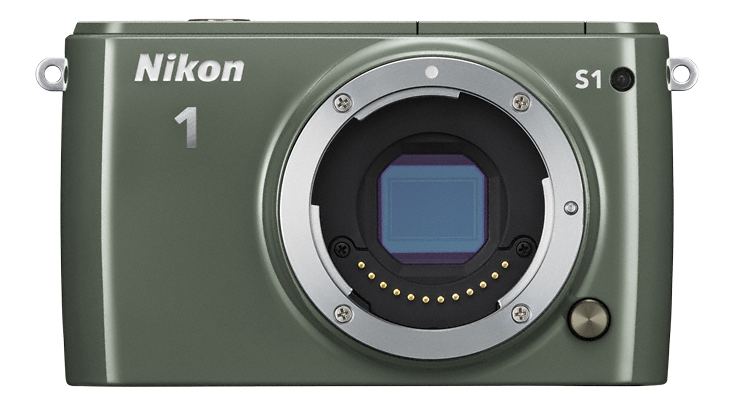TechRadar Verdict
Pros
- +
Good image quality
- +
Small size
- +
Best Moment Capture
Cons
- -
No touchscreen
- -
Long-winded operation
- -
Can't shoot raw and JPEG files together
Why you can trust TechRadar
In the relatively short time since Nikon first introduced a compact system camera (CSC), it has managed to produce the best selling model, making serious dents into the sales figures of its nearest competitors, namely Panasonic and Sony.
Despite having a much smaller sensor than all but the Pentax Q range of compact system cameras, Nikon has managed to capture the imagination of the buying public with a variety of easy to use and fun cameras, with cameras such as the Nikon 1 V2 even beginning to appeal to more advanced users.
At the start of this year, Nikon introduced a new line to the already existing 1 V and 1 J series in the shape of the Nikon 1 S1. This is Nikon's simplest compact system camera to date, and is a no frills version of the Nikon 1 J3. That means it comes without the fuss of mode dials and lots of buttons, instead concentrating on enabling you to take pictures.
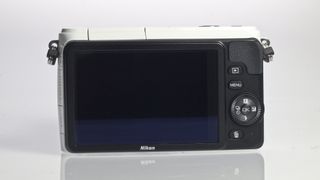
It still has all the manual control and raw shooting capability that you would expect of a camera with interchangeable lenses, it's just buried a little deeper - enabling you to explore those options if you want to, but also ignoring them if it's not for you.
As with the other Nikon 1 series cameras, the Nikon 1 S1 is equipped with a 1-inch CX format sensor. This gives it a crop factor of 2.7x, meaning the standard 11-27.5mm kit optic is roughly equivalent to 30-74mm on a full-frame (35mm camera).
The Nikon 1 S1's sensor has 10.1 million pixels, giving it the lowest pixel count of any of the current crop of Nikon 1 cameras.
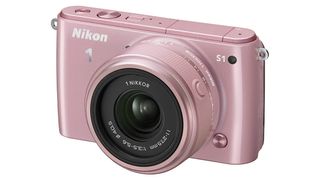
Also onboard is Nikon's Expeed 3A processing engine, which enables the Nikon 1 series of cameras to boast what it describes as the world's fastest continuous shooting, at 15fps with autofocus, and up to 60fps with a fixed-point autofocus.
An advanced hybrid AF system makes its way onto the Nikon 1 S1. This means that the camera uses phase detection AF for speed, and contrast detection AF for greater precision. Depending on the scene, the sensor switches between the 73 phase detection focus areas and the 135 contrast detection focus areas.
Full HD video recording is available at 60 and 30 fps as well as 60i, 60p and 30p frame rates. Full resolution photos can also be captured while filming. Slow motion movies can be captured by recording at up to 1200 fps.
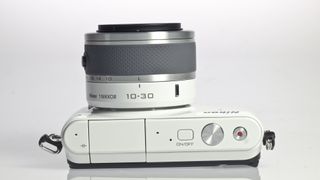
Squarely aimed at the beginner photographer, Nikon has incorporated several interesting features into the Nikon S1 to appeal to novices. For a start, Live Image Control enables you to preview the results of changes made on the LCD screen before you take the shot.
With non-photographic language to guide the beginner along, it should be a great way to get to grips with the intricacies of parameters such as shutter speed and aperture.
As has been seen before on Nikon 1 cameras, the Nikon 1 S1 includes Best Moment Capture. This incorporates Smart Photo Selector, which takes up to 15 high resolution photos before the shutter button is even fully pressed, suggesting five of the best for you to choose from.
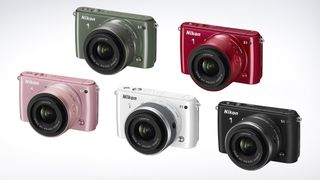
Alternatively, Slow View captures up to 15 continuous shots, playing them back on the LCD screen until you choose the one you want.
It doesn't have Wi-Fi built in, but the Nikon 1 S1 is compatible with Nikon's Wu-1b wireless adaptor. At the back of the camera is a 460k dot, 3-inch LCD screen. It's not touch-sensitive, tiltable or articulated, though.
For now, the number of proprietary optics for the Nikon 1 system is fairly limited. However, if you already own Nikkor lenses for DSLRs, an adaptor is available for using with the Nikon 1 system - though it's worth remembering that the 2.7x crop factor will apply to any optic you attach.
With an asking price of £479.99/US$499.95 including one 11-27.5mm kit lens, the Nikon 1 S1 is one of the most affordable CSCs currently on the market. It goes head to head with the likes of the Olympus PEN Mini E-PM2 and the Sony NEX-3N, both of which feature a larger sensor.
Amy has been writing about cameras, photography and associated tech since 2009. Amy was once part of the photography testing team for Future Publishing working across TechRadar, Digital Camera, PhotoPlus, N Photo and Photography Week. For her photography, she has won awards and has been exhibited. She often partakes in unusual projects - including one intense year where she used a different camera every single day. Amy is currently the Features Editor at Amateur Photographer magazine, and in her increasingly little spare time works across a number of high-profile publications including Wired, Stuff, Digital Camera World, Expert Reviews, and just a little off-tangent, PetsRadar.
